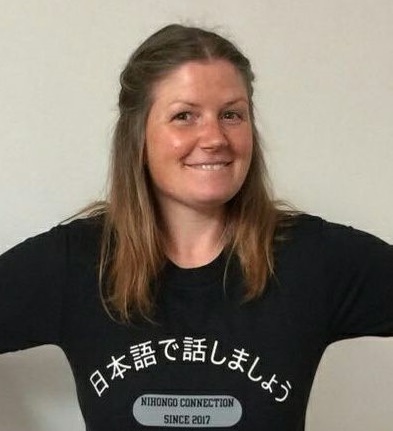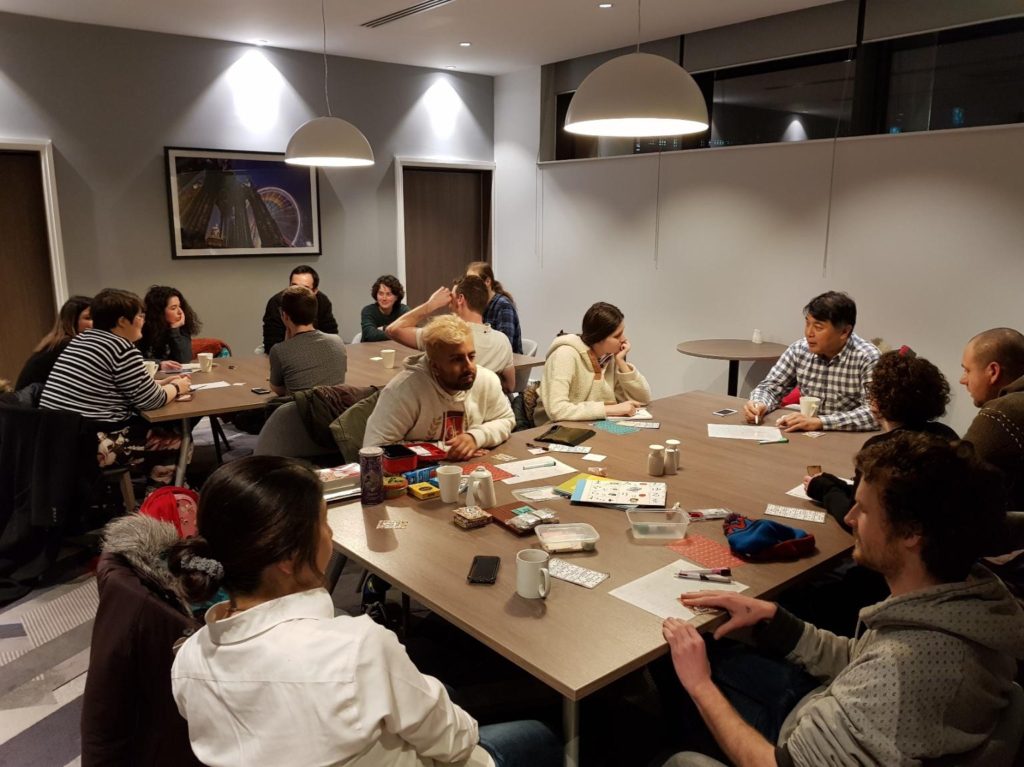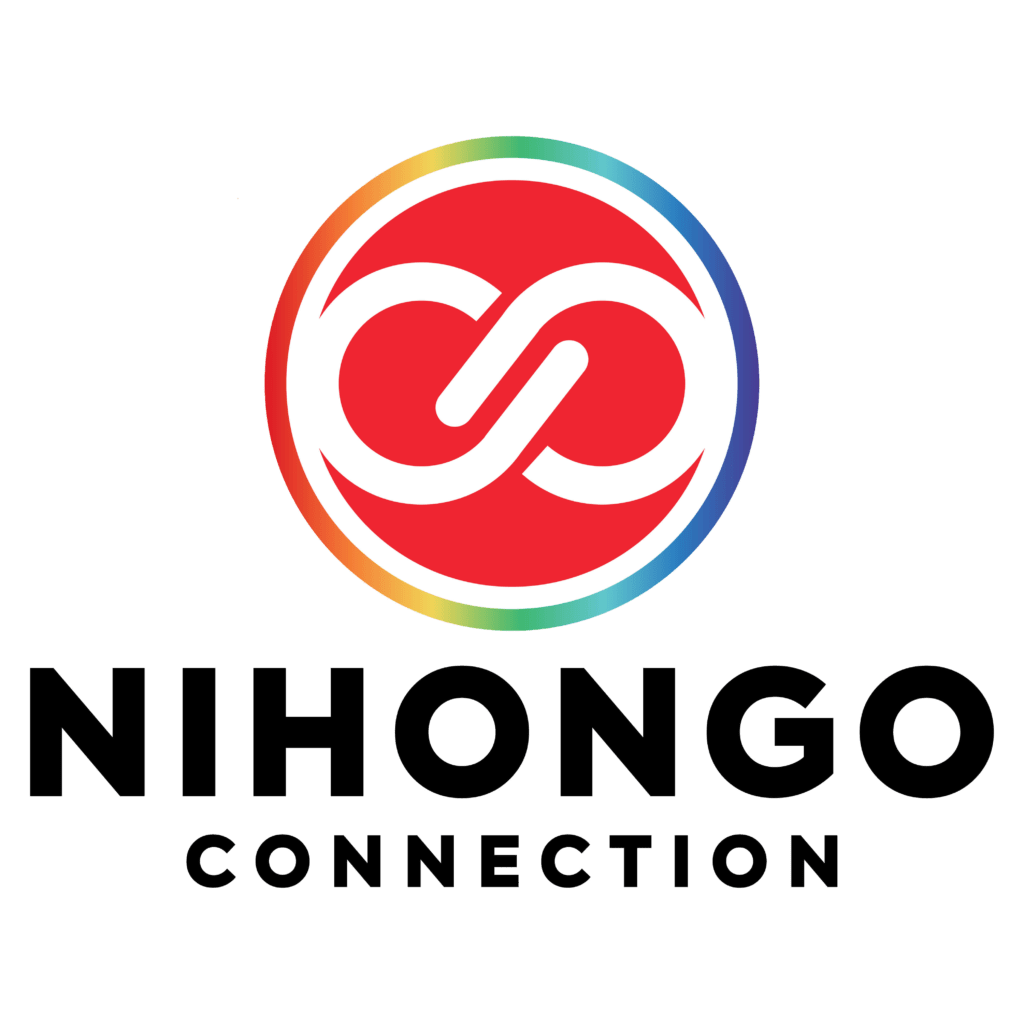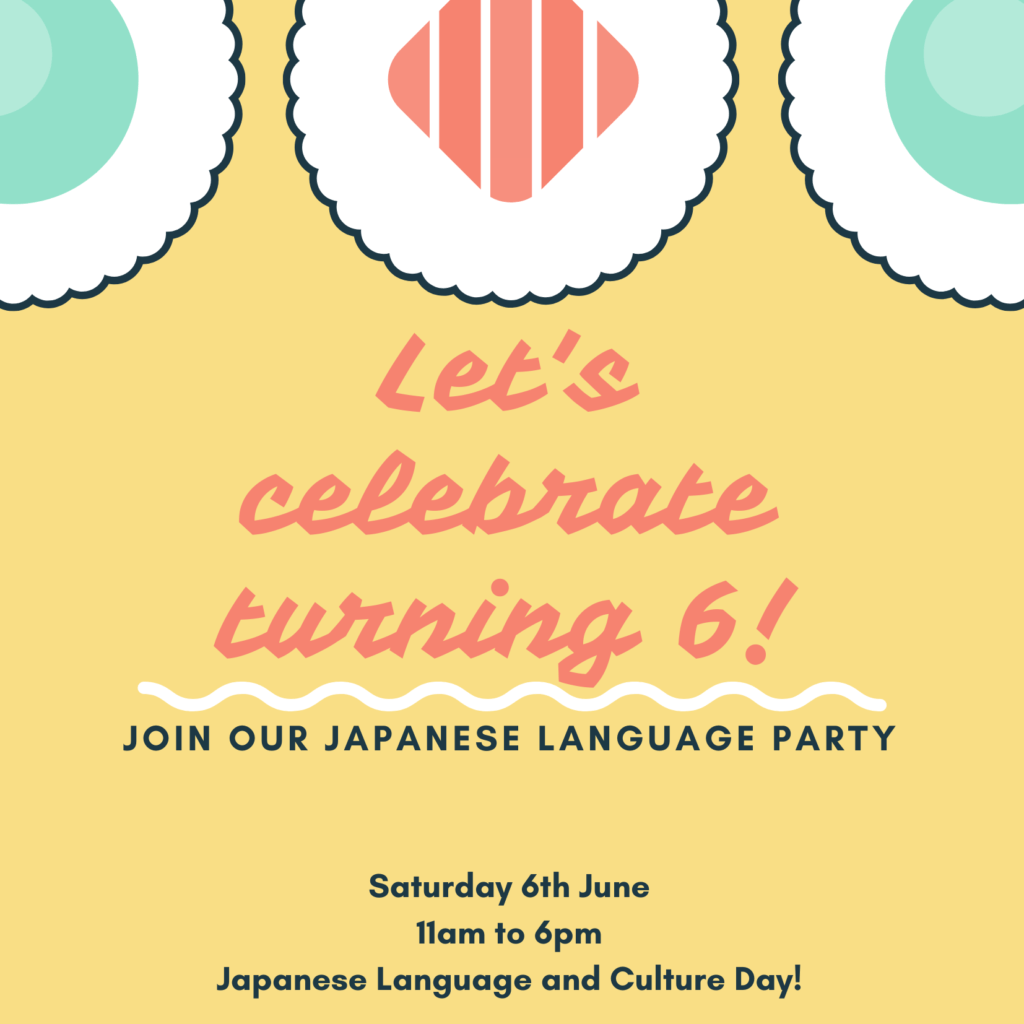Welcome to the Senpai Success Story, where you can read about others who have walked a unique career path using their Japanese language/cultural skills. (Psst: Senpai means “mentor” or “teacher,” and the concept is important to understand for anyone wishing to work in a Japanese business setting.)
Want to Learn Japanese?
Welcome to our Japanese Language Group: Nihongo Connection
Nihongo Connection will soon be celebrating it’s 6th Birthday!
We started as a Japanese study club in Edinburgh, Scotland back in June 2014…
It all began because of frustration!
I had come back to the UK from Japan in 2005 and I had been attending Japanese classes to try and manage my Japanese language skills, desperately trying to retain the Japanese that I had picked up whilst living in Japan.
Wait, who are you? Who started Nihongo Connection?

Let me introduce myself.
I’m Jess!
Born in London, but brought up in a sleepy village in East Anglia, England, I accidentally had a Japanese lesson in 1998 which ended up changing the path of my life and had me moving to Japan in 2000.
I lived in Japan from 2000 until 2005 and during that time was a JET Programme participant teaching English for 3 years. I also spent some time as a taiko drumming apprentice for Drum TAO in Oita Prefecture, Kyushu. This involved me living with the taiko group for an extended period of time training, cleaning, cooking and learning to perform. I had a real immersive experience as the only non-Japanese there. Naturally, I noticed a significant increase in my language skills after that experience!
Learning Japanese in Japan
Before joining the taiko team I had done a lot of language lessons. I had attended a lot of courses and I had also been very active in my community. So I was able to communicate in Japanese on a basic level. Once I left the taiko drumming group where I had spent all day, every day living in the Japanese language, being spoken to in the Japanese language, having to reply in the Japanese language, I was a lot more capable of holding a conversation.

Even after I left the taiko drumming group and went back to teaching in English, I was still spending my days after work, after teaching English, going to another taiko team, communicating with them in Japanese, spending a lot of time with Japanese friends that I’d made in the area.
I was basically living my life surrounded by the Japanese language because I was in Japan.
Right…
So when I came back to the UK, I needed the same.
How can I speak Japanese when I don’t live in Japan?
Just do what you would do in Japan!
I again joined a taiko drumming group based near Glasgow in Scotland. However, I was surprised to find that a lot of the people in that group, hadn’t been to Japan at all, and many definitely didn’t speak Japanese. So although I was able to continue with my taiko drumming, I wasn’t able to continue with my language skills.
So from 2005 when I arrived back in the UK, until 2014 I was attending group and private Japanese class, after class, after class, trying to maintain my Japanese. The classes of course were aimed at my level, but none of them were really aimed at conversation. I had conversational level Japanese, but the classes were all teaching from textbooks or they were Japanese culture classes, which is great, but the attendees were mostly not conversational in Japanese, so the teachers would use English. Now I didn’t notice at the time, but I started to turn up to the lessons early and I would hang around after the lessons as well. Always the first student there and the last student to leave. And this was because I was actually craving the conversational element. So I would go to the class, I would converse with the teacher in Japanese before the class. The class would then start… and be predominantly in English.
Japanese lessons in Scotland
The classes I attended were all run by native Japanese speakers, but they would run the classes in English. They would teach the grammar to us from a textbook, and then we would have written exercises. This was just not what I was looking for at all. I didn’t realize what I was looking for, I just turned up early to converse with the teacher and I would leave late to converse with the teacher. I remained frustrated with my progress.
So it was after a couple of years that I decided to just try and find the class I was looking for. I ended up going to four different Japanese language classes every week:
- Private language schools
- University evening classes
- Student union-organised university classes
- I would contact Japanese native speakers that I knew and organized group classes for myself and other people so that we could perhaps create my ideal class.
Motivation and self-studying Japanese
It wasn’t until attending a group class that I organised in 2014 that I noticed I only ever did my homework just before the class. We had been given the homework the week before. However, I didn’t look at it for an entire week. Then I turned up at the class with this homework, hurriedly completed just minutes before.
This made me think…
“Why am I not doing the homework? I want to learn, I want to speak Japanese, I want to learn more Japanese. Why not do the homework?”
That’s when I realized that I didn’t have the motivation.
Motivation is KEY!
Yes, I was paying for the lessons, I was turning up to the lessons. BUT I wasn’t doing anything in between. That was pretty much worthless to me because I wasn’t using any of the language in between the lessons. So what was the point in paying for these lessons?
So during the next lesson I spoke to the other people in the class and asked them:
“When did you do your homework for this class?”
They said to me:
“Actually this afternoon” or
“While I was on the bus on the way here”.
So they were doing the same thing as me! A whole week was going past with no Japanese and they were turning up to the class again. They couldn’t find the motivation either. So I just went with my gut and I just said:
“Hey look, let’s meet halfway through the week and let’s do our homework together. At least we’ll have some Japanese halfway through the week, in between these classes and then we’ll get some continuity for our brains”.
They agreed!
Japanese Study Club
So it was myself, Sharleen and Loki first of all. We started to meet up in a big coffee shop, a big name brand coffee shop. They brought their textbooks, sat down, opened the textbooks and started writing their homework… in silence.
“Noooooo” this isn’t what I want! (I screamed internally!)
I was like a child inside “I don’t want to do THIS. I don’t want to sit here in silence to do this homework!”.
So I spoke up:
“Hey, can we chat in Japanese whilst we do our homework?”.
They agreed.
So we would chat together in Japanese, just the three of us, three learners chatting together, trying to use the vocabulary from our homework within our conversation.
Motivation to learn Japanese
Now that gave me the motivation, the fact that I was beginning to speak again, really drove me to keep these meetings going. So I would consistently arrange our meetings. It became a weekly thing. I also had a Japanese friend who I told about this and she decided to come along and help us as well. So then we had a Japanese native speaker there to chat to in Japanese to help us with our homework and we built our study club. After a while we decided to move location and we moved to a pub first, but it was too noisy. Then we moved to a smaller coffee shop to meet up.
Soon the group grew through word of mouth.
People were finding out about our conversation club.
Japanese Conversation Club

We created a Facebook group and we called ourselves Nihongo Scotland – because we were in Scotland.
We met on Fridays 6:00 until 8:00 PM and we met weekly at the same time, at the same place. When we got to the winter, however, it wasn’t so good because then our meeting place closed an hour earlier. So we needed somewhere else to go because, for me, one hour wasn’t enough! So we then looked for a new location and we found one which was closer to the city centre and the group kept growing.
Now, don’t get me wrong, there were times when I turned up and I was the only person for the first half hour! However, I was there every week, week on week. I took games, I took textbooks for those people that wanted to read textbooks and I took and I created activities.
With a background in Teaching English as a Foreign Language, I started to adapt the ideas, the same games as I had used teaching English. I changed them into Japanese language activities instead.
So we would gather every Friday from 6:00 to 8:00 PM at a burger place, where you could sit down and have drinks. Yes, they served alcohol, which helped people speak in a foreign language.
People become more relaxed (nomu -> to drink + communication = nomunication).
Soon we had 20-30 people coming to the group every week.
Online Japanese Conversation Club
Around that time, things were changing in my personal life. I had now been in Edinburgh for nearly 10 years and had been working solidly. I wanted more freedom to work on my terms and I wanted to travel more. I realised I wanted to have an online business that I could do from anywhere.
At that point, something strange started to happen. I started to get messages on Facebook from people wanting to join the Facebook group who were not in Edinburgh, who were in places all over the world. I decided to put screening questions on the Facebook group because I had so many people from so many places asking to join.
I joined an online entrepreneur group on Facebook and ended up getting a free session with a business coach and she asked me why I wasn’t running an online version of my conversation club.
The Universe was sending me messages and so I started to look at ways to run the group online. From then the online group grew. At that point I realized that calling the group Nihongo Scotland wasn’t going to appeal to people around the world.

So I changed it to Nihongo Connection, because primarily it’s a group for connection. We are connecting with each other around the world using the medium of the Japanese language. The idea also is that no English is used at all.
Language Exchange groups
At our conversation club, from the minute you arrive, it’s Japanese only until the minute you leave. The reason we do this is because in my experience of language exchange situations, it always defaults to English. That may not be your experience, but that was my experience. That is often because the native English speaker thinks:
“Oh, well, you know, English is used more readily. Let’s help them out with their English”.
STOP! It’s an excuse.
You’re just afraid to speak Japanese!
You’re just afraid to make those mistakes in Japanese.
I was guilty of this. This was my way out when I lived in Japan.
So when I started this group, I thought, I am not going to let myself get away with this. It’s going to be Japanese only. That was the only rule. You walk in here, it’s Japanese only.
Now, the funny thing that’s happened about that is… now in our Japanese conversation group, some of those people have never spoken to me in English. That’s really weird, isn’t it!? Especially if you walk in the street (before lockdown) you’ll be in the city and you bump into somebody from the conversation club, we automatically speak to each other in Japanese. That’s pretty cool. You’re standing in the middle of Edinburgh, in Scotland and you’re chatting in Japanese because that is the default language that you have had with that person. You haven’t had a conversation with that person in English or another language. It’s only ever been Japanese. For me, it’s like my brain just automatically sees that person… That’s somebody from the conversation club, “Konnichiwa” (or “Konbanwa”, whatever time of day it is).
That’s a habit that’s formed.
So the conversation club then became an online Japanese conversation community.
Online Japanese Conversation
We had a lot of requests for online speaking opportunities. So I started to think about how this could work. So I had to find out what we could use and how we could use it. I started to research different online platforms. By now it was 2017.
At the time Skype was only allowing 1-1 person calls. So I knew we couldn’t use Skype.
Then after some research, I found out about Zoom.
Next I set up the event on our Facebook page.
I’m pretty sure I did the first conversation club call at 8:00 PM UK time. So we had a few people come to that. We had people from the United States and people from the UK, and then I got messages from people on the Facebook group saying:
“Hey, wait, I’m in Australia”
“I’m in Japan”
“I’m in New Zealand”
“I can’t make that time. Can you do one that’s earlier in the day?”
I was working full time for the Japanese Consulate in Edinburgh at the time and luckily the Consulate is five minutes walk from where I live. So I thought, ok, I can get up earlier and run the conversation club before work. It’ll just be half an hour so I can quickly do a half an hour conversation club before I start my day at the office.
So I would quickly get up, brush my hair, get online and chat to people in Japanese, 8:00 AM my time in the UK and this allowed people in Japan to join us, so then we had a Japanese speaker in the group to make sure that we were speaking proper Japanese.
Soon I had people joining from Indonesia, Vietnam, it was really becoming international.
So we then had a session at eight o’clock in the evening and then the next week I did an eight o’clock in the morning, but the messages still kept coming. The messages would say:
“I can’t make this time because I’m at work”
“I can’t make that time because I’m asleep”
Bearing in mind these people were in different parts of the planet, so the two sessions I had created still fell at times that just weren’t convenient for all. So then I added a lunchtime session.
Running an online business and working full-time
I was at work at the Consulate and then when we had a lunch break I would run home, I would actually run home. It would take me five minutes to run home. I would quickly grab a banana. I would sit down at my desk and I would start up the call. We would chat for half an hour and then I would quickly finish the call and then I would run back to the office, maybe with some biscuits in my pocket or something so that I had something else to eat because I didn’t have time to eat a proper meal because I was running this conversation club. You know you can’t eat when you’re talking. So the lunchtime one was always a bit hectic.
So that became a three-week cycle:
Japanese Conversation Club in the morning.
The next week Japanese Conversation Club at lunchtime.
The following week would be Japanese Conversation Club in the evening.
Still people contacted me:
“Hey, I don’t want to wait every three weeks”
“I’m missing out this particular week…”
“I couldn’t go because of this… “
“So I really have to wait six weeks until the next one!?”.
So then I thought, okay, right. Well how can I help people to get this conversation opportunity when they’re in different parts of the world?… I’m going to have to run three Japanese Conversation Clubs every week so everybody gets a chance every week. So then I started running three of these conversation clubs every week. So I’d have one in the morning, I would have one at lunchtime and then I would have one in the evening…
Every. Single. Week.
All whilst I was working full time at the Japanese consulate.
That went on for about three months.
At that point I was using the Free Zoom, so you could speak for 40 minutes. I wasn’t paying any money for that, but I was getting worn out because I had a lot of messages coming through Facebook all the time. I was needing to set up the events on Facebook and I was facilitating the calls.
Finally, I spoke to a business coach again and they told me: “you need to start a membership”.
So I set up my Nihongo Connection online Japanese conversation club membership: Nihongo Confidence in November of 2017 and quit my job at the Japanese Consulate in 2018 to run the community full time.

I am so proud of how far we have come!
Online Japanese Language and Culture Party!
Nihongo Connection will soon be celebrating it’s 6th Birthday and so we are throwing an Online Birthday Party on Saturday 6th June 2020.

Here is your invitation to join us!
We have invited some of our favourite teachers to come along and teach us about Japanese language and culture through a variety of fun activities.
- Kimono fashion show – wear your Kimono or Yukata and have our expert tell you more about it.
- Yoga in Japanese – join our class to learn Japanese and stretch your body.
- Japanese Pitch Accent – perfect your Japanese speaking skills with Ryoji sensei.
- Strategies for learning Kanji – remember those kanji once and for all!
- And more activity details here…
The event will run 11am-6pm UK on Saturday 6th June 2020 and is £20 for the full day ticket. It is very important for us to support the work of mental health charity MIND and so 50% of your ticket price goes to the charity.
Here is your invitation to join us!
For more details about our community Nihongo Connection and our membership Nihongo Confidence please visit www.NihongoConnection.com
Join the conversation on Social Media at Facebook, Instagram (nihongo_connection) and LinkedIn and see us sharing Japanese language resources on Twitter and Pinterest.